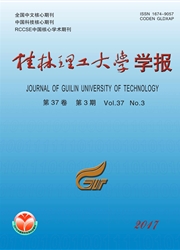

 中文摘要:
中文摘要:
近10多年来,许多研究者对滇黔桂矿集区微细浸染型金矿成矿年代学进行了研究,采用的同位素定年方法有蚀变矿物及流体包裹体Rb-Sr法,硫化物Pb-Pb法,石英裂变径迹法等,获得了276~259、206、157-82Ma等3组数据.文中对这些测年方法及所获数据进行了分析和比较,初步探讨了这些测年数据与右江盆地发展演化历史和相关的构造-热事件的关系,认为伴随盆地裂解的二叠纪玄武岩岩浆活动主要起提供部分矿源层的作用,而110-80Ma华南岩石圈大规模伸展及相关岩浆活动可能是该区大规模成矿的动力学背景.提出了利用硫化物Re-Os法,热液绢云母^40Ar-^39Ar法等直接精确测定热液矿物年龄以获得成矿年龄的方法和可能途径.
 英文摘要:
英文摘要:
Many researchers have studied the chronology on the micro-disseminated gold deposits in Yunnan - Guizhou - Guangxi triangle area in southwest China in the past ten years. Reported dating methods comprise Rb - Sr dating on alteration minerals and fluid inclusions, Pb - Pb dating of sulphide, and fission-track dating of quartz. The ages reported range from 276 Ma to as young as 82 Ma, and fall into three groups, i. e. 276 - 259 Ma, 206 Ma, and 157 - 82 Ma. Dating methods and ages reported are analyzeel and compared. The relationship between these ages reported and corresponding tectonic-thermal events are discusseol in this paper. It is considered that Permian basalt erupted during the development of the Youjiang Late Paleozoic basin providing partly Au, and that large scale lithospherie extension and related magmatic activity in 110 - 80 Ma in south China are the dynamic setting for the large scale metallogenesis of micro-disseminated gold deposits in Yunnan - Guizhou - Guangxi triangle area, part of the south China metallogenic province. The high precision dating methods, such as,Re - Os dating of sulphide and ^40Ar - ^39Ar dating of sericites are proposed to date this type of gold deposits.
 同期刊论文项目
同期刊论文项目
 同项目期刊论文
同项目期刊论文
 Discovery of Cu-Ni-Zn-Sn-Fe intermetallic compounds and S-bearing alloys in the Zhaishang gold depos
Discovery of Cu-Ni-Zn-Sn-Fe intermetallic compounds and S-bearing alloys in the Zhaishang gold depos Constraints on the depth, geometry and kinematics of blind detachment faults provided by fault propa
Constraints on the depth, geometry and kinematics of blind detachment faults provided by fault propa Types, Characteristics, and Geodynamic Settings of Mesozoic Epithermal Gold Deposits in Eastern Chin
Types, Characteristics, and Geodynamic Settings of Mesozoic Epithermal Gold Deposits in Eastern Chin Tectonic significance of Late Triassic post-collisional lamprophyre dykes from the Qinling Mountains
Tectonic significance of Late Triassic post-collisional lamprophyre dykes from the Qinling Mountains Geochemistry and Nd-Sr isotopic studies of Late Mesozoic granitoids in the southeastern Hubei Provin
Geochemistry and Nd-Sr isotopic studies of Late Mesozoic granitoids in the southeastern Hubei Provin Re-Os molybdenite and 40Ar-39Ar phlogopite dating of Cu-Fe-Au-Mo (W) ore deposits in southeastern Hu
Re-Os molybdenite and 40Ar-39Ar phlogopite dating of Cu-Fe-Au-Mo (W) ore deposits in southeastern Hu SHRIMP zircon U-Pb dating of the intrusives in the Tongling metallogenic cluster and its dynamic set
SHRIMP zircon U-Pb dating of the intrusives in the Tongling metallogenic cluster and its dynamic set Molybdenite Re-Os and albite 40Ar/39Ar dating of Cu-Au-Mo and magnetite porphyry systems in the Yang
Molybdenite Re-Os and albite 40Ar/39Ar dating of Cu-Au-Mo and magnetite porphyry systems in the Yang Tectonic implications from Re Os dating of Mesozoic molybdenum deposits in the East Qinling Dabie or
Tectonic implications from Re Os dating of Mesozoic molybdenum deposits in the East Qinling Dabie or Precise Re-Os dating of molybdenite from the east Qinling molybdenum belt in central China and its g
Precise Re-Os dating of molybdenite from the east Qinling molybdenum belt in central China and its g SHRIMP Zircon U-Pb and Molybdenite Re-Os Datings of the Superlarge Donggou Porphyry Molybdenum Depos
SHRIMP Zircon U-Pb and Molybdenite Re-Os Datings of the Superlarge Donggou Porphyry Molybdenum Depos SHRIMP zircon U-Pb dating for volcanic rocks of the Dasi Formation in southeast Hubei Province, midd
SHRIMP zircon U-Pb dating for volcanic rocks of the Dasi Formation in southeast Hubei Province, midd Geology and geochemistry of telluride bearing Au deposits in the Pingyi area, Western Shandong, Chin
Geology and geochemistry of telluride bearing Au deposits in the Pingyi area, Western Shandong, Chin The relationship of mantle-derived fluids to gold metallogenesis in the Jiaodong Peninsula: Evidence
The relationship of mantle-derived fluids to gold metallogenesis in the Jiaodong Peninsula: Evidence P-T conditions of the crystallization and origin of plagioclase-mantled alkli feldspar megacrysts in
P-T conditions of the crystallization and origin of plagioclase-mantled alkli feldspar megacrysts in Kübler index and K-Ar ages of illite in Yinshan polymetallic deposit, Dexing, Jiangxi Province, Sout
Kübler index and K-Ar ages of illite in Yinshan polymetallic deposit, Dexing, Jiangxi Province, Sout 期刊信息
期刊信息
